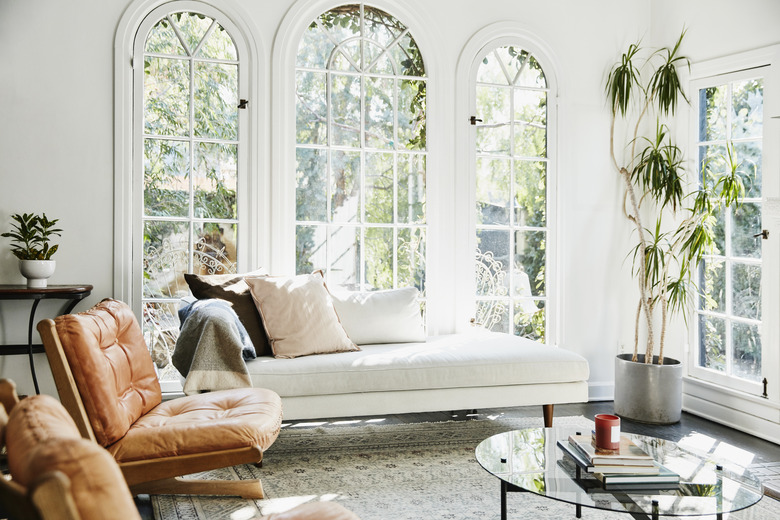How To Paint A Glass-Top Table
We may receive a commission on purchases made from links.
Painting glass is arguably easier than painting other surfaces because so little preparation is required. All you really have to do is clean the glass carefully to ensure there are no oily residues on the surface to inhibit paint adhesion. The type of paint you use matters, though, because it needs to dry very hard, or it will be easily scraped off.
Another variable is the method you use to apply the paint, and while you could conceivably use a roller, the two most common options are brushing and spraying. Aerosol paint usually isn't as durable as paint that comes in a can, but if you're painting the glass from the reverse side, it can give a better finished look. The best choice of paint and application method depends on the project at hand.
Paint Options for Glass
Paint Options for Glass
If you're painting the top side of a glass-top table, no matter whether you're painting all the glass or you're just painting designs, you need a hard paint that won't scrape off easily. Generally, this means a gloss or semigloss enamel because the glossier the paint, the harder it dries, owing to the fact that glossy paint has a higher ratio of binders and resins to pigments than flat paint. The hardest enamels are usually solvent-based, but water-based acrylic enamel will also work. Whichever you use, you should precede it with a coat of bonding primer to ensure adhesion, although that may not be practical if you're just painting designs.
When painting the glass from the underside, you don't use a primer because if you do, that will be what you see from the top. Because you're painting the underside, the paint doesn't have to be as durable, so a can of aerosol paint will work. In terms of glossiness, the same equation applies: The glossier the paint, the more durable it is and the longer it will last.
Preparing Glass for Painting
Preparing Glass for Painting
You don't need to buy expensive cleaners to prepare glass for painting; regular glass cleaner will do the job. You just need to spray it on and squeegee it off or wipe it off with a rag. Don't touch the glass after you've cleaned it because oily fingerprints are enough to lift the paint.
If the glass isn't permanently attached, lift it off the table and put it on a workbench covered with old newspaper with the side you're going to paint facing up. If the glass is built into the table, you'll want to mask off any parts of the table that you don't want to paint using blue painters' tape and cover the floor around the table with newspaper. That's it ... you're ready to paint.
Applying Paint to Glass
Applying Paint to Glass
If you decide to use acrylic enamel, the very best way to apply it is to use a handheld sprayer. Put the paint in the spray can, thin it with enough water or mineral spirits to make it sprayable (you might go 10 to 20 percent thinner depending on paint consistency), and fire away. Use the paint without thinning it if you apply it by brush and keep the brush strokes long and unidirectional. It may help to add a little Floetrol or something similar to the paint to help it flow out and eliminate stroke lines.
Precede the paint with a high-bonding primer if you're painting from the top, but if you're painting from the bottom, apply the paint directly to the glass. When painting from underneath, you can use flat paint in an aerosol can to give a less reflective, more textured look. Flat paint isn't very durable, however, so it's a good idea to apply a topcoat of acrylic enamel or clear polyurethane to protect it.
